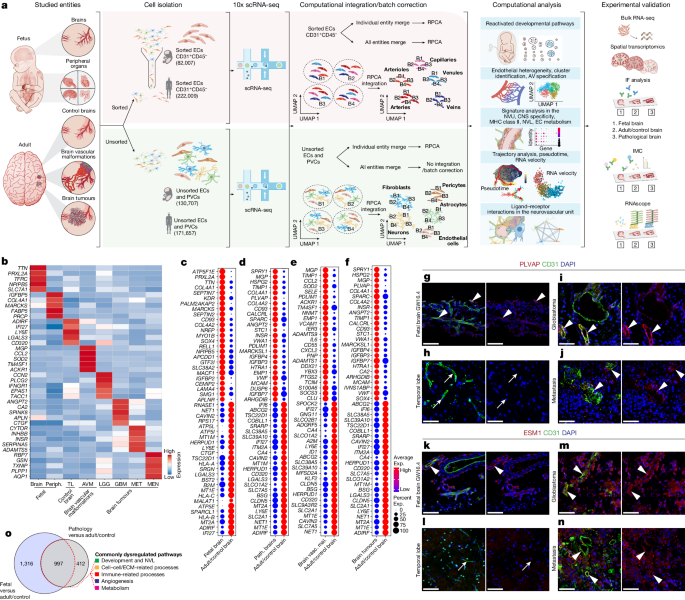Single-cell Atlas of the Human Brain Vasculature Across Development, Adulthood, and Disease
Introduction
Understanding the vasculature of the human brain is crucial for studying the development, function, and dysfunction of the brain. The human brain vasculature plays a vital role in regulating blood flow, delivering nutrients and oxygen to brain cells, and removing waste products. Recent advancements in technology have allowed researchers to create a single-cell atlas of the human brain vasculature across different stages of life and in disease states.
Developmental Stage
During development, the brain vasculature undergoes significant changes as it grows and matures. The single-cell atlas reveals intricate details of the vasculature formation and remodeling processes that occur during embryonic and early postnatal stages. This information can provide insights into how disruptions in vascular development may contribute to neurodevelopmental disorders.
Adulthood
In adulthood, the brain vasculature remains dynamic and responsive to changes in the brain’s metabolic demands. The single-cell atlas enables researchers to study the cellular composition and molecular signatures of different types of brain blood vessels, including arterioles, capillaries, and venules. This knowledge can help in understanding how alterations in the brain vasculature contribute to age-related cognitive decline and neurodegenerative diseases.
Disease States
In disease states, such as stroke, traumatic brain injury, and neurodegenerative disorders, the brain vasculature undergoes pathological changes that can exacerbate brain damage and impair cognitive function. The single-cell atlas allows researchers to identify specific cell types and signaling pathways that are dysregulated in diseased brain vasculature. This information can lead to the development of targeted therapies for neurovascular diseases.
Conclusion
The single-cell atlas of the human brain vasculature provides a comprehensive overview of the cellular and molecular features of the brain’s vascular system across different stages of life and in disease states. This atlas is a valuable resource for researchers studying brain development, function, and pathology. By understanding the complexities of the brain vasculature at the single-cell level, we can unravel the mysteries of brain health and disease.
FAQs
What is a single-cell atlas?
A single-cell atlas is a comprehensive map of all the cell types present in a tissue or organ, along with their gene expression profiles and interactions.
How can the single-cell atlas of the human brain vasculature help in disease research?
By identifying specific cell types and molecular pathways involved in brain vasculature pathology, researchers can develop targeted therapies for neurovascular diseases.
What are the potential applications of the single-cell atlas of the human brain vasculature?
The atlas can be used to study brain development, aging, neurodegeneration, and other brain disorders, as well as to design personalized treatment strategies based on individual variations in brain vasculature.




